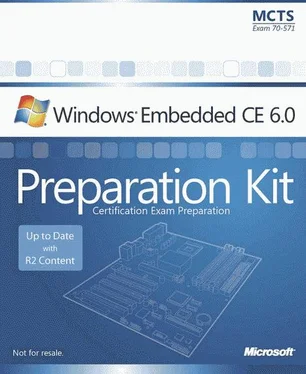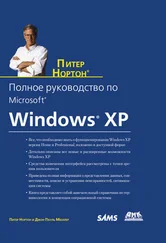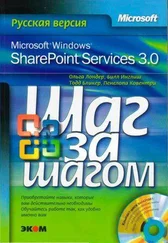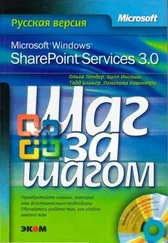Nicolas Besson - Microsoft Windows Embedded CE 6.0 Exam Preparation Kit
Здесь есть возможность читать онлайн «Nicolas Besson - Microsoft Windows Embedded CE 6.0 Exam Preparation Kit» весь текст электронной книги совершенно бесплатно (целиком полную версию без сокращений). В некоторых случаях можно слушать аудио, скачать через торрент в формате fb2 и присутствует краткое содержание. Город: Redmond, Год выпуска: 2008, Издательство: Microsoft, Жанр: Руководства, ОС и Сети, Программы, на английском языке. Описание произведения, (предисловие) а так же отзывы посетителей доступны на портале библиотеки ЛибКат.
- Название:Microsoft Windows Embedded CE 6.0 Exam Preparation Kit
- Автор:
- Издательство:Microsoft
- Жанр:
- Год:2008
- Город:Redmond
- ISBN:нет данных
- Рейтинг книги:5 / 5. Голосов: 1
-
Избранное:Добавить в избранное
- Отзывы:
-
Ваша оценка:
- 100
- 1
- 2
- 3
- 4
- 5
Microsoft Windows Embedded CE 6.0 Exam Preparation Kit: краткое содержание, описание и аннотация
Предлагаем к чтению аннотацию, описание, краткое содержание или предисловие (зависит от того, что написал сам автор книги «Microsoft Windows Embedded CE 6.0 Exam Preparation Kit»). Если вы не нашли необходимую информацию о книге — напишите в комментариях, мы постараемся отыскать её.
Microsoft Windows Embedded CE 6.0 Exam Preparation Kit — читать онлайн бесплатно полную книгу (весь текст) целиком
Ниже представлен текст книги, разбитый по страницам. Система сохранения места последней прочитанной страницы, позволяет с удобством читать онлайн бесплатно книгу «Microsoft Windows Embedded CE 6.0 Exam Preparation Kit», без необходимости каждый раз заново искать на чём Вы остановились. Поставьте закладку, и сможете в любой момент перейти на страницу, на которой закончили чтение.
Интервал:
Закладка:
■ Clone a BSP<\/strong>Avoid writing a new BSP completely from scratch. Instead, clone a BSP to jump start the adaptation process. By reusing as much code as possible from a reference BSP, you not only shorten development time, but also increase the quality of your solution and provide a solid foundation for efficient handling of future upgrades.<\/p>
■ Boot loader and BLCOMMON<\/strong>Use BLCOMMON and related libraries when implementing a boot loader because these libraries provide useful hardware-independent features for downloading run-time images and enabling users to interact with the target device during the startup process.<\/p>
■ Memory and BSPs<\/strong>Make sure you thoroughly understand how Windows Embedded CE 6.0 deals with physical and virtual memory. Configure < Boot loader<\/em> >.bib and Config.bib files to provide accurate information about available memory to the operating system and adjust the entries in the OEMAddressTable, if necessary. Keep in mind that you cannot directly access physical memory in Windows Embedded CE. Use the correct memory-mapping APIs to map physical memory addresses to virtual memory addresses.<\/p>
■ Implement power management<\/strong>Implement the OEMIdle function to enable the system to switch the CPU into Idle mode. Consider implementing OEMPowerOff as well, if your platform supports power state transitions into Suspend mode in response to user actions or critical battery levels.<\/p>
Key Terms<\/p> <\/div>
Do you know what these key terms mean? You can check your answers by looking up the terms in the glossary at the end of the book.<\/p>
■ PQOAL<\/p>
■ Boot loader<\/p>
■ KernelIoControl<\/p>
■ Driver globals<\/p>
Suggested Practices<\/p> <\/div>
To help you successfully master the exam objectives presented in this chapter, complete the following tasks.<\/p>
Access the Hardware Registers of a Peripheral Device<\/p> <\/div>
Implement a device driver for peripheral hardware and access the hardware registers by using the MmMapIoSpace API to interact with the device. Note that it is not possible to call MmMapIoSpace from an application.<\/p>
Because Device Emulator emulates an ARM processor in software, you cannot access hardware devices. You must use a genuine hardware platform to perform this suggested practice.<\/p> <\/cite>
Reorganize Platform Memory Mappings<\/p> <\/div>
By modifying the Config.bib file of the cloned Device Emulator BSB, you can increasingly reduce the available RAM on the system and study the impact in terms of available memory on the system by using the memory information APIs or Platform Builder tools.<\/p>
Chapter 6<\/p>
Developing Device Drivers<\/p> <\/div>
Device drivers are components that enable the operating system (OS) and user applications to interact with peripheral hardware that is integrated or attached to a target device, such as the Peripheral Component Interconnect (PCI) bus, keyboard, mouse, serial ports, display, network adapter, and storage devices. Rather than accessing the hardware directly, the operating system loads the corresponding device drivers, and then uses the functions and input/output (I/O) services that these drivers provide to carry out actions on the device. In this way, the Microsoft® Windows® Embedded CE 6.0 R2 architecture remains flexible, extensible, and independent of the underlying hardware details. The device drivers contain the hardware-specific code, and you can implement custom drivers in addition to the standard drivers that ship with CE to support additional peripherals. In fact, device drivers are the largest part of the Board Support Package (BSP) for an OS design. However, it is also important to keep in mind that poorly implemented drivers can ruin an otherwise reliable system. When developing device drivers, it is imperative to follow strict coding practices and test the components thoroughly in various system configurations. This chapter discusses best practices for writing device drivers with proper code structures, developing a secure and well-designed configuration user interface, ensuring reliability even after prolonged use, and supporting multiple power management features.<\/p>
Exam objectives in this chapter:<\/strong> <\/p>
■ Loading and using device drivers on Windows Embedded CE<\/p>
■ Managing interrupts on the system<\/p>
■ Understanding memory access and memory handling<\/p>
■ Enhancing driver portability and system integration<\/p>
■ To complete the lessons in this chapter, you must have the following:<\/p>
■ At least some basic knowledge about Windows Embedded CE software development, including fundamental concepts related to driver development, such as I/O control (IOCTL) and Direct Memory Access (DMA).<\/p>
■ An understanding of interrupt handling and how to respond to interrupts in a device driver.<\/p>
■ Familiarity with memory management in C and C++, as well as and knowledge of how to avoid memory leaks.<\/p>
■ A development computer with Microsoft Visual Studio® 2005 Service Pack 1 and Platform Builder for Windows Embedded CE 6.0 R2 installed.<\/p>
Lesson 1: Understanding Device Driver Basics<\/p> <\/div>
On Windows Embedded CE, a device driver is a dynamic-link library (DLL) that provides a layer of abstraction between the underlying hardware, OS, and applications running on the target device. The driver exposes a set of known functions and provides the logic to initialize and communicate with the hardware. Software developers can then call the driver's functions in their applications to interact with the hardware. If a device driver adheres to a well-known application programming interface (API) such as Device Driver Interface (DDI), you can load the driver as part of the operating system, such as a display driver or a driver for a storage device. Without having to know details about the physical hardware, applications can then call standard Windows API functions, such as ReadFile or WriteFile, to use the peripheral device. You can support different types of peripherals by adding different drivers to the OS design without having to reprogram your applications.<\/p>
After this lesson, you will be able to:<\/strong> <\/p>
■ Differentiate between native and stream drivers.<\/p>
■ Describe the advantages and disadvantages of monolithic and layered driver architectures.<\/p>
Estimated lesson time: 15 minutes.<\/strong> <\/p> <\/cite>
Native and Stream Drivers<\/p> <\/div>
A Windows Embedded CE device driver is a DLL that exposes the standard DllMain function as the entry point, so that a parent process can load the driver by calling LoadLibrary or LoadDriver. Drivers loaded by means of LoadLibrary can be paged out, but the operating system does not page out drivers loaded through LoadDriver.<\/p>
While all drivers expose the DllMain entry point, Windows Embedded CE supports two different types of drivers: native drivers and stream drivers. Native CE drivers typically support input and output peripherals, such as display drivers, keyboard drivers, and touchscreen drivers. The Graphics, Windowing, and Events Subsystem (GWES) loads and manages these drivers directly. Native drivers implement specific functions according to their purpose, which GWES can determine by calling the GetProcAddress API. GetProcAddress returns a pointer to the desired function or NULL if the driver does not support the function.<\/p>
Интервал:
Закладка:
Похожие книги на «Microsoft Windows Embedded CE 6.0 Exam Preparation Kit»
Представляем Вашему вниманию похожие книги на «Microsoft Windows Embedded CE 6.0 Exam Preparation Kit» списком для выбора. Мы отобрали схожую по названию и смыслу литературу в надежде предоставить читателям больше вариантов отыскать новые, интересные, ещё непрочитанные произведения.
Обсуждение, отзывы о книге «Microsoft Windows Embedded CE 6.0 Exam Preparation Kit» и просто собственные мнения читателей. Оставьте ваши комментарии, напишите, что Вы думаете о произведении, его смысле или главных героях. Укажите что конкретно понравилось, а что нет, и почему Вы так считаете.








